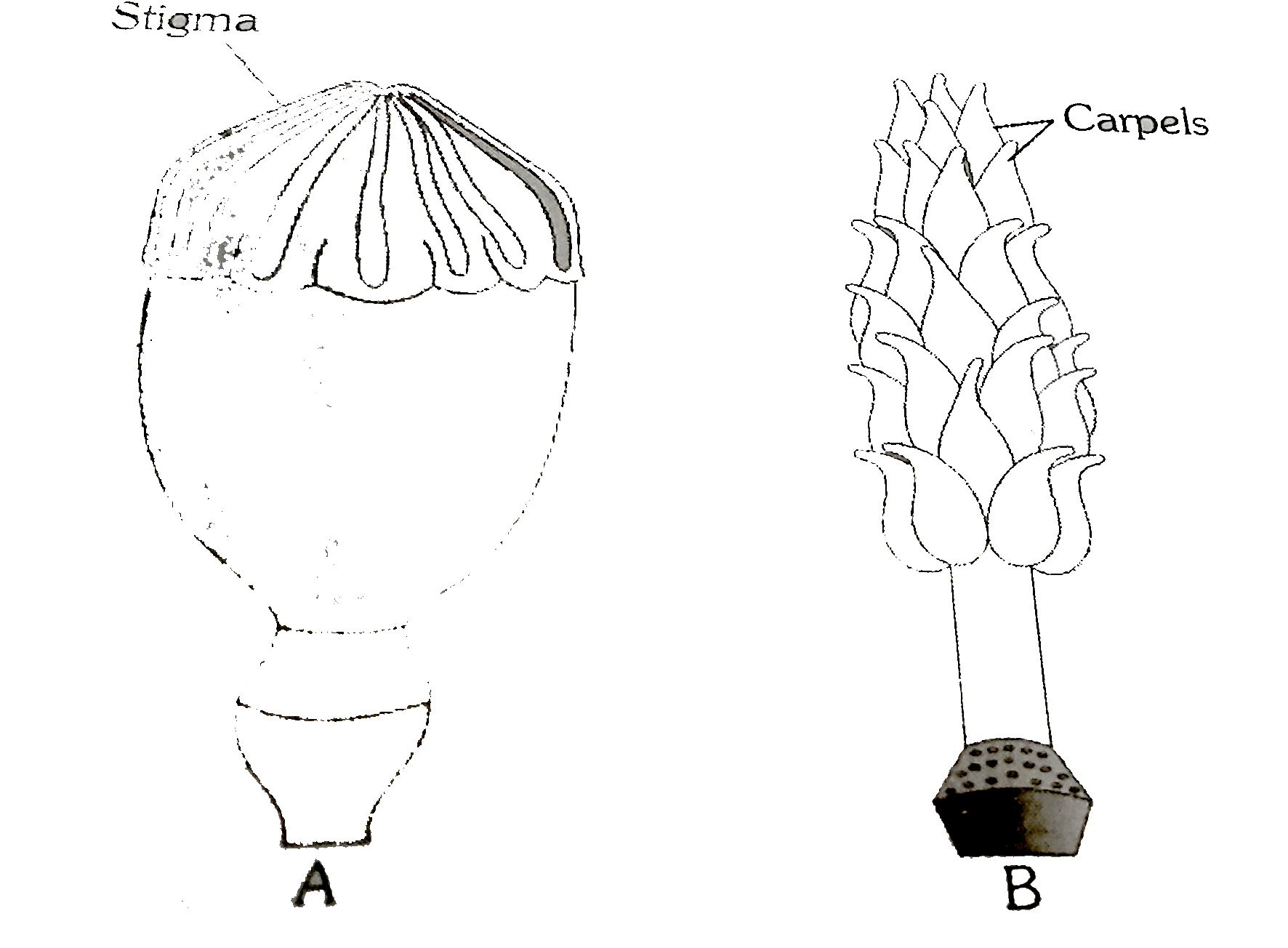Michelia has
multiple carpels which are free from each other
multiple carpels which are fused to each other
single carpel
an inferior ovary
The correct Answer is:A
To solve the question about Michelia, we will analyze the characteristics of its gynoecium (the female reproductive part of the flower) and identify the correct answer based on the information provided.
1. Identify the Genus: Michelia is a genus that belongs to the Magnoliaceae family, commonly known as the magnolia family. This family includes various flowering plants.
Hint: Remember that the genus name is often the first part of the scientific name of an organism.
2. Common Name: Michelia is also known as the Champa tree in local terminology. This helps in recognizing the plant in different contexts.
Hint: Knowing the common name can help in identifying the plant in various regions.
3. Understanding Gynoecium: The gynoecium is the female reproductive part of the flower, which consists of carpels or pistils. The arrangement and number of these carpels can vary significantly across different plant families.
Hint: The gynoecium's structure is crucial for understanding the reproductive strategy of flowering plants.
4. Types of Carpels: Carpels can be classified into two conditions:
- Monocarpellary: A single carpel.
- Multi-carpellary: Multiple carpels.
Hint: Pay attention to whether the carpels are fused or separate, as this distinction is important.
5. Fused vs. Separate Carpels:
- Syncarpus: When all carpels are fused together.
- Apocarpus: When the carpels are separate and free from each other.
Hint: The terms syncarpous and apocarpous are key to understanding the arrangement of carpels.
6. Michelia's Gynoecium: In the case of Michelia, the gynoecium is described as multi-carpillary and apocarpus. This means that it has multiple carpels that are not fused together.
Hint: Look for the specific characteristics of the gynoecium when identifying plant types.
7. Conclusion: Based on the information, the correct answer is that Michelia has multiple carpels that are separate and free from each other, which corresponds to the apocarpous condition.
Final Answer: Michelia has a multi-carpillary and apocarpus gynoecium.
Summary of the Answer:
Michelia exhibits a multi-carpillary and apocarpus condition in its gynoecium, meaning it has multiple separate carpels.
- Monocarpellary: A single carpel.
- Multi-carpellary: Multiple carpels.
- Syncarpus: When all carpels are fused together.
- Apocarpus: When the carpels are separate and free from each other.
Michelia exhibits a multi-carpillary and apocarpus condition in its gynoecium, meaning it has multiple separate carpels.
Topper's Solved these Questions
Similar Questions
Knowledge Check
How many plants given below have syncarpous gynoecium?
Rose, Lotus, Michelia, Papaver, HibiscusAOneBTwoCThreeDFourThe gynoecium of michelia is
AmonocarpellaryBmulticarpellary apocarpusCmulticarpellary, syncarpousDbicarpelary syncarpousThe given figure A and B show female reproductive organs of Papaver and michelia respectively
 AA- Multicarpellary syncarpous pistil and B Multicarpellary apocarpous pistilBA- Multicarpellary apocarpous pistil B- Multicarpellary syncarpous pistilCBoth A and B are multicarpellary syncarpous pistilsDBoth A and B are multicarpellary apocarpous pistil
AA- Multicarpellary syncarpous pistil and B Multicarpellary apocarpous pistilBA- Multicarpellary apocarpous pistil B- Multicarpellary syncarpous pistilCBoth A and B are multicarpellary syncarpous pistilsDBoth A and B are multicarpellary apocarpous pistil
Aurelia has
View SolutionStudy the following lists
List-IList-IIA. PapaverI. Nucellus not covered by integumentsB.MicheliaII. Apocarpous gynoeciumC.LoranthusIII. Ovule covered by single integumentD. HelianthusIV. Ovule covered by two integumentsV. Syncarpous gynoecium
View SolutionPila has a
View SolutionBetel has
View SolutionIris has
View Solution